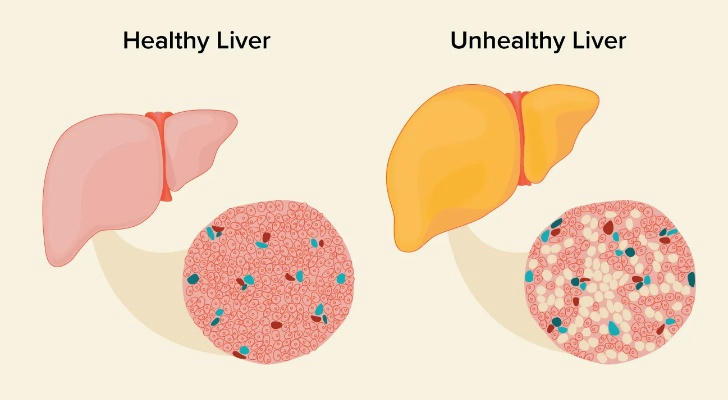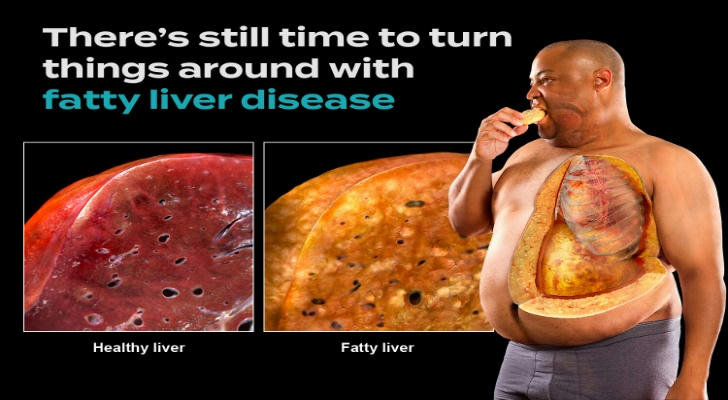How To Keep Your Liver Healthy And Happy
Fatty liver disease, also known as hepatic steatosis, is a condition in which excess fat builds up in the liver. It’s becoming increasingly common around the world, largely due to changes in lifestyle, diet, and rising rates of obesity. While fatty liver disease can often go unnoticed because it usually doesn’t cause symptoms early on, it can lead to serious liver damage if not properly managed. In this article, we will explain what fatty liver disease is, its causes, symptoms, risks, and how it can be prevented and treated.

What Is Fatty Liver Disease?
The liver is a vital organ in the body, responsible for processing nutrients, filtering toxins, and producing essential proteins. However, like any organ, the liver can develop problems. Fatty liver disease happens when too much fat accumulates in the liver cells. Although it's normal to have small amounts of fat in the liver, when more than 5-10% of the liver's weight is made up of fat, it becomes a problem.
Fatty liver disease can be classified into two types:
Non-Alcoholic Fatty Liver Disease (NAFLD): This is the most common form and occurs in people who drink little to no alcohol. NAFLD is often linked to obesity, insulin resistance, and other metabolic problems.
Alcoholic Fatty Liver Disease (AFLD): As the name suggests, this type is caused by excessive alcohol consumption. Chronic drinking can overwhelm the liver’s ability to process alcohol and lead to fat accumulation.
What Causes Fatty Liver Disease?
Several factors can contribute to the development of fatty liver disease, with lifestyle choices being the most significant. Below are some of the leading causes:
Obesity: Carrying excess weight, especially around the abdomen, is one of the most significant risk factors for fatty liver disease. Fat cells release fatty acids that can travel to the liver and accumulate.
Poor Diet: Diets high in unhealthy fats, refined sugars, and processed foods can lead to fat buildup in the liver. Eating too many sugary drinks, fast food, and snacks can also contribute to insulin resistance, which is closely linked to fatty liver.
Insulin Resistance: Insulin resistance happens when the body’s cells don’t respond properly to insulin, causing higher insulin levels. This is often seen in people with type 2 diabetes or prediabetes and is a major risk factor for non-alcoholic fatty liver disease (NAFLD).
Excessive Alcohol Consumption: Drinking too much alcohol is the primary cause of alcoholic fatty liver disease (AFLD). Alcohol can damage liver cells, and when consumed in large quantities over time, it leads to fat accumulation.
Genetics: Some people may be genetically predisposed to fatty liver disease, meaning they may develop it even without the typical risk factors like obesity or alcohol consumption.
Medications: Certain medications, like corticosteroids or some cancer treatments, can also contribute to fat buildup in the liver.
Other Health Conditions: Conditions such as high blood pressure, high cholesterol, and sleep apnea are associated with an increased risk of developing fatty liver disease.
What Are the Symptoms of Fatty Liver Disease?

Fatty liver disease is often called a “silent” disease because it usually does not cause noticeable symptoms, especially in the early stages. Most people with fatty liver disease are unaware they have it, and the condition is often discovered during routine blood tests or imaging studies like ultrasounds.
When symptoms do occur, they may include:
Fatigue: Feeling unusually tired or weak, even after adequate rest.
Abdominal discomfort: A vague feeling of fullness or discomfort in the upper right side of the abdomen, where the liver is located.
Enlarged liver: In some cases, the liver may become enlarged, which can be detected by a doctor during a physical examination.
Jaundice: In more severe cases, the skin or eyes may take on a yellowish tint.
Dark urine: This may indicate liver problems.
Swelling in the abdomen or legs: This occurs when fatty liver disease progresses to cirrhosis or liver failure.
If fatty liver disease progresses to more serious stages, such as cirrhosis or liver fibrosis, the symptoms can become more severe, and complications like liver failure can develop.
What Are the Risks of Fatty Liver Disease?
If left untreated, fatty liver disease can lead to more severe liver problems. In its early stages, fatty liver disease is often reversible with lifestyle changes. However, if the condition worsens, it can lead to:
Liver Inflammation: When fat builds up in the liver, it can cause inflammation, which damages liver cells and can lead to scarring.
Cirrhosis: Cirrhosis is the scarring of the liver tissue, often as a result of chronic inflammation. This can significantly impair liver function and may lead to liver failure.
Liver Cancer: In some cases, fatty liver disease, especially in its later stages, can increase the risk of developing liver cancer.
Heart Disease: People with fatty liver disease are also at an increased risk of developing heart disease. The same risk factors that cause fatty liver (such as obesity, insulin resistance, and high cholesterol) are also linked to cardiovascular disease.
Kidney Damage: Research has shown that fatty liver disease may also increase the risk of kidney disease, especially in people with advanced liver damage.
How Is Fatty Liver Disease Diagnosed?

Fatty liver disease is usually diagnosed through a combination of the following methods:
Blood Tests: Doctors may order liver function tests to check for elevated liver enzymes, which can indicate liver inflammation or damage.
Imaging Tests: A doctor may use imaging techniques such as ultrasound, CT scans, or MRI to assess the liver and detect fat accumulation.
Liver Biopsy: In some cases, a biopsy (taking a small sample of liver tissue) may be necessary to determine the extent of liver damage and whether there is any scarring.
How Can Fatty Liver Disease Be Prevented and Treated?
The good news is that fatty liver disease is preventable and often reversible with proper lifestyle changes. Here are some key steps for managing and preventing fatty liver disease:
Maintain a Healthy Weight: Losing weight gradually (about 1-2 pounds per week) can help reduce liver fat and improve liver health. Even a small reduction in body weight can have a significant impact.
Eat a Balanced Diet: A diet rich in fruits, vegetables, whole grains, and healthy fats can help prevent fatty liver disease. Avoid processed foods, sugary drinks, and excessive alcohol.
Exercise Regularly: Aim for at least 150 minutes of moderate-intensity exercise per week to help maintain a healthy weight and improve liver function.
Limit Alcohol Consumption: If you have alcoholic fatty liver disease, reducing or eliminating alcohol intake is crucial to preventing further liver damage.
Control Underlying Health Conditions: Managing conditions such as diabetes, high blood pressure, and high cholesterol can help reduce the risk of developing fatty liver disease.
Medications: While there is no specific medication for fatty liver disease, doctors may recommend medications to manage underlying conditions like diabetes or high cholesterol.
Conclusion
Fatty liver disease is a growing concern, but the good news is that it’s largely preventable and treatable. By making healthier lifestyle choices, such as maintaining a healthy weight, eating a balanced diet, exercising regularly, and managing underlying health conditions, you can significantly reduce your risk of developing this condition. If you already have fatty liver disease, taking action now to improve your health can help prevent serious liver damage and protect your long-term well-being.
